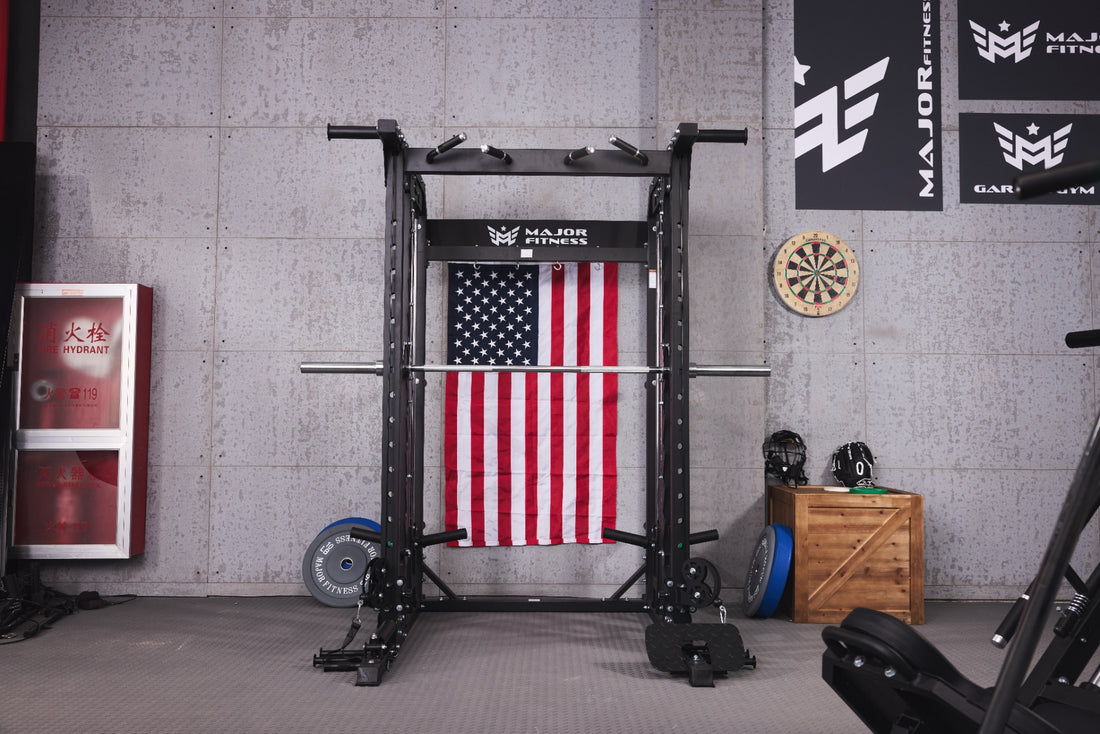
Embark on a fitness journey with the Smith machine, a staple in gyms worldwide, known for its versatility and safety. How much resistance on Smith machine can vary, influenced by its mechanics and the user's technique. This multifaceted piece of equipment offers a unique blend of guided movement and adjustable resistance, making it an excellent tool for beginners and seasoned athletes alike. Understanding the Smith machine's resistance intricacies will empower users to tailor their workouts, ensuring efficiency and promoting muscle growth in a safe, controlled environment.
The Smith machine's resistance is not as straightforward as free weights. To fully grasp the resistance nuances, one must consider the machine's construction. Comprising a barbell fixed within steel rails, allowing only vertical or near-vertical movement, the Smith machine significantly reduces the need for the user to balance the weight, unlike traditional free-weight exercises. This distinctive feature alters the perceived resistance. Generally, the barbell on a Smith machine weighs between 15 to 25 pounds (6.8 to 11.3 kilograms), lighter than a standard Olympic barbell. However, the machine's mechanics can either add to or subtract from the actual lifting weight, depending on the model and angle of the rails.
To accurately calculate how much resistance on Smith machine is handling, users must consider the starting weight of the bar and any counterbalances. Some Smith machines are designed with counterbalance systems to reduce the effective weight of the bar, making it easier to lift off. This setup is particularly beneficial for beginners or those recovering from injuries. On the other hand, machines without counterbalances offer a resistance level more akin to traditional barbells, providing a more challenging workout. Additionally, the angle of the Smith machine's rails can impact the resistance. Vertical rails offer resistance closest to that of free weights, while angled rails can either increase or decrease the mechanical load, depending on the direction of the angle and the exercise being performed.
An essential aspect of optimizing your workout with the Smith machine involves understanding its safety features. The machine's built-in safety mechanisms allow users to lock the bar at any point during their lift, significantly reducing the risk of injury from losing control of the weight. This feature not only makes the Smith machine a safer alternative to free-weight exercises but also enables users to push their limits with confidence. For those aiming to increase muscle strength and endurance, incorporating the Smith machine into your routine can be a game changer. It allows for a focus on specific muscle groups without the added challenge of stabilizing the weight, leading to effective muscle isolation.

When planning your workout, consider the type of exercises you intend to perform and adjust the resistance accordingly. Compound movements such as squats, presses, and deadlifts can be executed safely on the Smith machine, with the added benefit of adjustable resistance. This versatility makes the Smith machine an invaluable tool for tailoring resistance to match individual strength levels, supporting progressive overload principles. To further customize your regimen, integrate free-weight exercises alongside Smith machine workouts to promote muscle stabilization and overall balance.
The Smith machine's unique resistance features offer a versatile platform for a wide range of exercises, accommodating users of all fitness levels. Whether you're looking to build muscle, enhance stability, or simply enjoy a safe and controlled workout, understanding how much resistance on Smith machine is fundamental. By adjusting the resistance to meet your personal fitness goals, you can leverage the Smith machine to achieve significant gains in strength, endurance, and muscle mass, all while minimizing the risk of injury. Embrace the Smith machine as a critical component of your fitness journey, harnessing its potential to transform your workouts and elevate your physical wellness.




















All comment(1)
How much resistance does Major fitnesss smith machine d2 have without any added weights